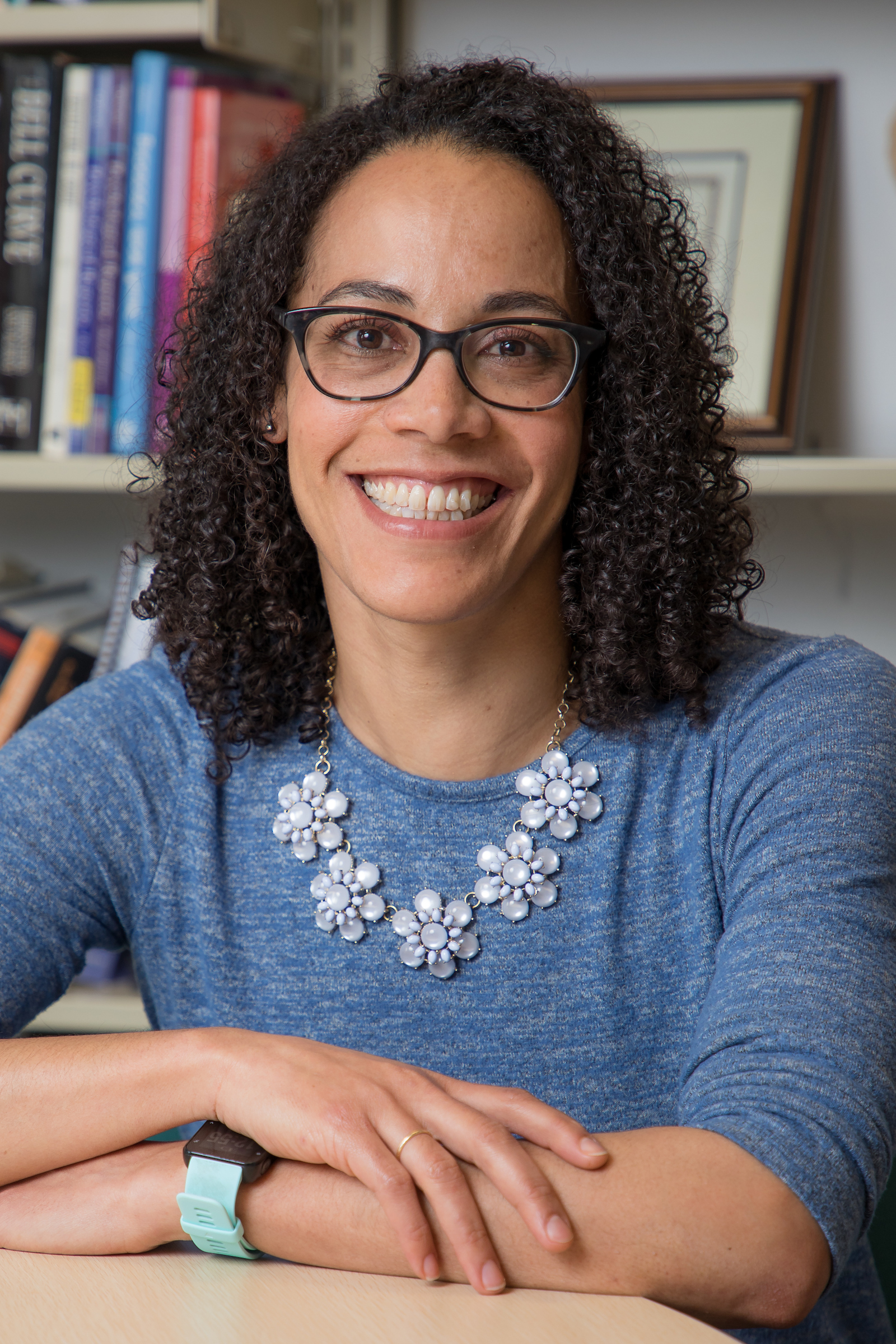 Psychologist Jocelyn Carter can discuss the impact of stress and gun violence on children and teens. (DePaul University/Jeff Carrion)
Psychologist Jocelyn Carter can discuss the impact of stress and gun violence on children and teens. (DePaul University/Jeff Carrion)CHICAGO — Pediatric psychologist Jocelyn
Carter feels a personal connection to teens impacted by gun violence, from Parkland,
Florida, to the neighborhoods of Chicago. Twenty years ago, Carter was a senior
in high school when a student shot and killed a beloved middle school teacher
in her small Pennsylvania community.
Now an associate professor of clinical
psychology, Carter researches the impact of stress and trauma on child and
adolescent development and directs the Healthy Families Lab at DePaul
University. In this Q&A, Carter discusses how stress impacts young
survivors of gun violence in different ways, and she offers advice for adults
who are talking with teenagers and children about gun violence.
Q: It’s been 20 years since you experienced the aftermath of gun
violence as a teenager in Edinboro, Pennsylvania. What are your observations
about what’s happening now with the Never Again movement?
A: I have been thinking about the fact there
are so many people now in this club — it’s not a fun club to be a part of. We
are seeing what happens as teenagers who have experienced gun violence grow up
and make sense of it. And what their approaches might be to different political
decisions or where their own kids go to school.
This is not, unfortunately, a new problem. I
think it’s especially important to think about black children being more likely
to die from gun violence than the kids who you see in the media in the context
of these school shootings. I’ve been really encouraged to see with the student
protests, the students are wearing black to talk about how gun violence
differentially impacts kids who are ethnic minority or live in certain
neighborhoods. My hope is that we can keep making the connection between these
two types of issues.
Q: What is your current research on stress and trauma in children,
and how does the taxonomy you’re developing help categorize those stressors?
A: One of the things that’s kept the stress
field from moving forward is we don’t have really good ways of measuring
stress. That means, from study to study, pretty much everyone uses their own
measure. That is why one of my colleagues, Kathryn Grant, has committed to
solving this problem of stress measurement. I’ve been pleased to partner with
her in this work.
We also know that some amount of stress is
probably good, but we don’t know what those cut points are. Some researchers only
focus on one or two types of stressors, like parental divorce. Others study
poverty or trauma. But we know that kids who are exposed to one of those kinds
of stressors are also likely to be exposed to lots of other ones, and we’re
learning more about how they sort of pile up over the course of a lifetime. So
our main work now on this, we call it a stressor taxonomy, is trying to be
really specific and detailed about how the stressors are occurring and how
adolescents perceive them. One of the things that’s super interesting is not
everyone experiences the same event the same way.
Q: How does stress, related to gun violence or other causes,
impact children from different backgrounds in different ways?
A: The kids who are getting hardest hit in their
exposure to stressors are the ones who don’t have other protective factors to
help them cope and buffer the impact of their stressors on their emotional and
social development and physical health.
In our taxonomy, we consider systemic
stressors such as poverty, violence, lack of neighborhood safety or instability
in your education. So in Chicago especially we do a lot of work on the South
Side where four high schools are slated to be closed, and that stressor forms the
backdrop of what’s going to happen on any given day. If one thing happens, you
can bounce back pretty easily if you have stability in your environment. It’s
the most vulnerable kids and families who bear the burden of all these changes
that come up.
Q: How can adults support teenagers who are joining the movement
to end gun violence?
A: Later adolescents are right on the cusp of
adulthood, and their leadership sets a strong example. But children and younger
teenagers, ages 13 through 15, also need to know and trust that the adults
around them are strong and supportive and safe. So I wouldn’t want adults to
just step back and say “the kids have this,” because they are still kids.
Not all teenagers are going to want to talk
about things with every adult. Even if the adolescent or child doesn’t want to
talk to you about it, it will be important to make sure that there is someone
else they could talk to who could serve as a supportive adult.
###
Source:
Jocelyn Carter
jcarter9@depaul.edu
773-325-4840
Media Contact:
Kristin Claes Mathews
kristin.mathews@depaul.edu
773-362-7335